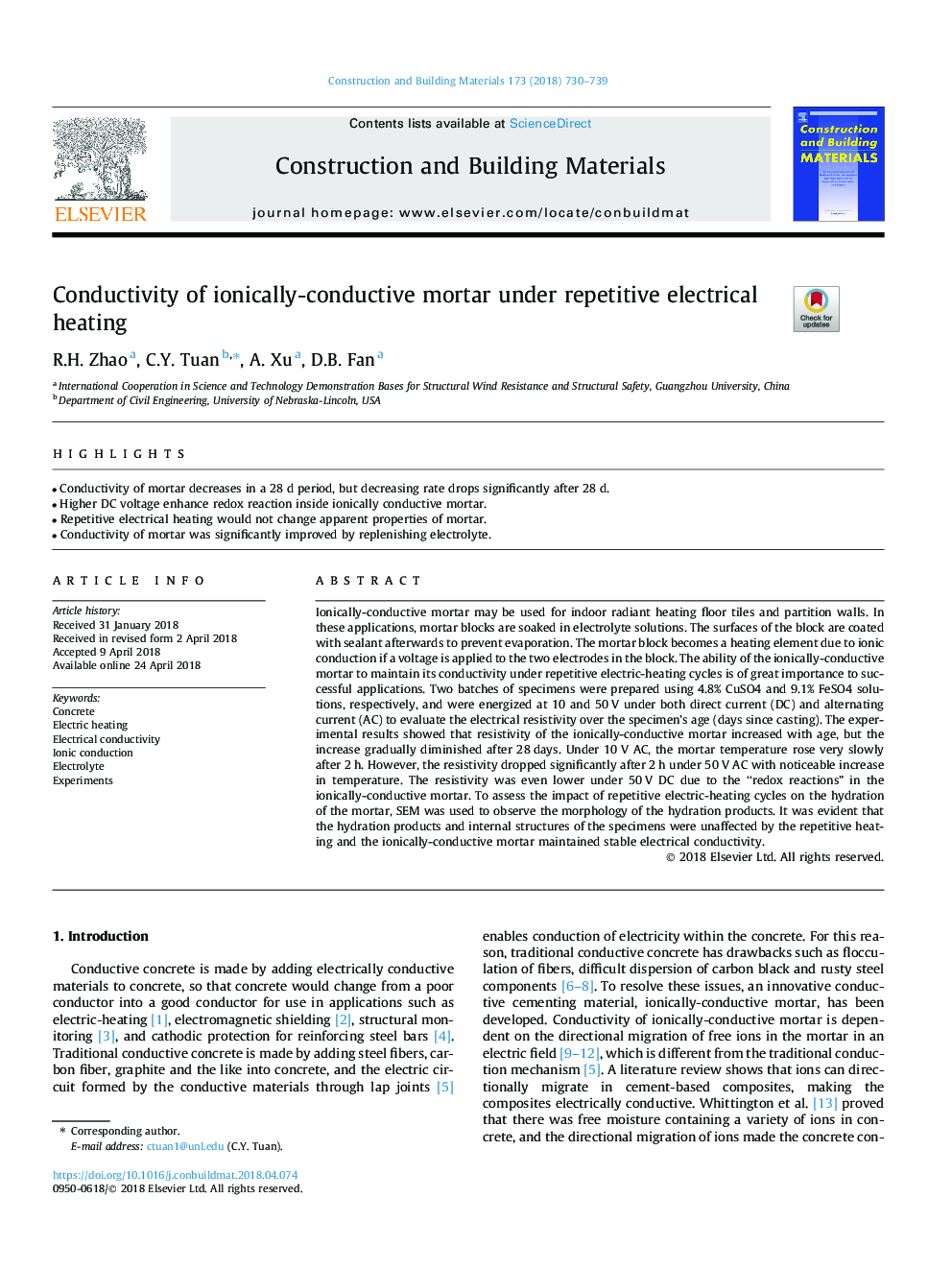| Article ID | Journal | Published Year | Pages | File Type |
|---|---|---|---|---|
| 6713893 | Construction and Building Materials | 2018 | 10 Pages |
Abstract
Ionically-conductive mortar may be used for indoor radiant heating floor tiles and partition walls. In these applications, mortar blocks are soaked in electrolyte solutions. The surfaces of the block are coated with sealant afterwards to prevent evaporation. The mortar block becomes a heating element due to ionic conduction if a voltage is applied to the two electrodes in the block. The ability of the ionically-conductive mortar to maintain its conductivity under repetitive electric-heating cycles is of great importance to successful applications. Two batches of specimens were prepared using 4.8% CuSO4 and 9.1% FeSO4 solutions, respectively, and were energized at 10 and 50â¯V under both direct current (DC) and alternating current (AC) to evaluate the electrical resistivity over the specimen's age (days since casting). The experimental results showed that resistivity of the ionically-conductive mortar increased with age, but the increase gradually diminished after 28â¯days. Under 10â¯V AC, the mortar temperature rose very slowly after 2â¯h. However, the resistivity dropped significantly after 2â¯h under 50â¯V AC with noticeable increase in temperature. The resistivity was even lower under 50â¯V DC due to the “redox reactions” in the ionically-conductive mortar. To assess the impact of repetitive electric-heating cycles on the hydration of the mortar, SEM was used to observe the morphology of the hydration products. It was evident that the hydration products and internal structures of the specimens were unaffected by the repetitive heating and the ionically-conductive mortar maintained stable electrical conductivity.
Related Topics
Physical Sciences and Engineering
Engineering
Civil and Structural Engineering
Authors
R.H. Zhao, C.Y. Tuan, A. Xu, D.B. Fan,
